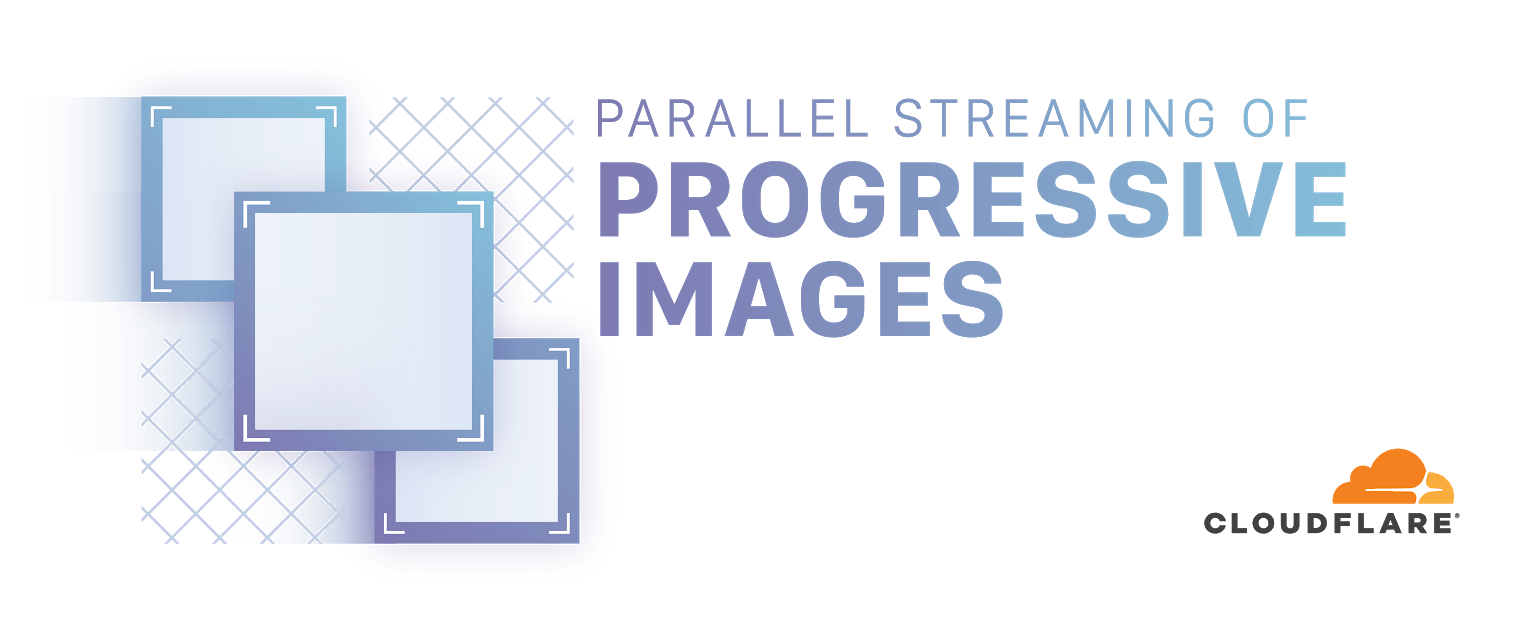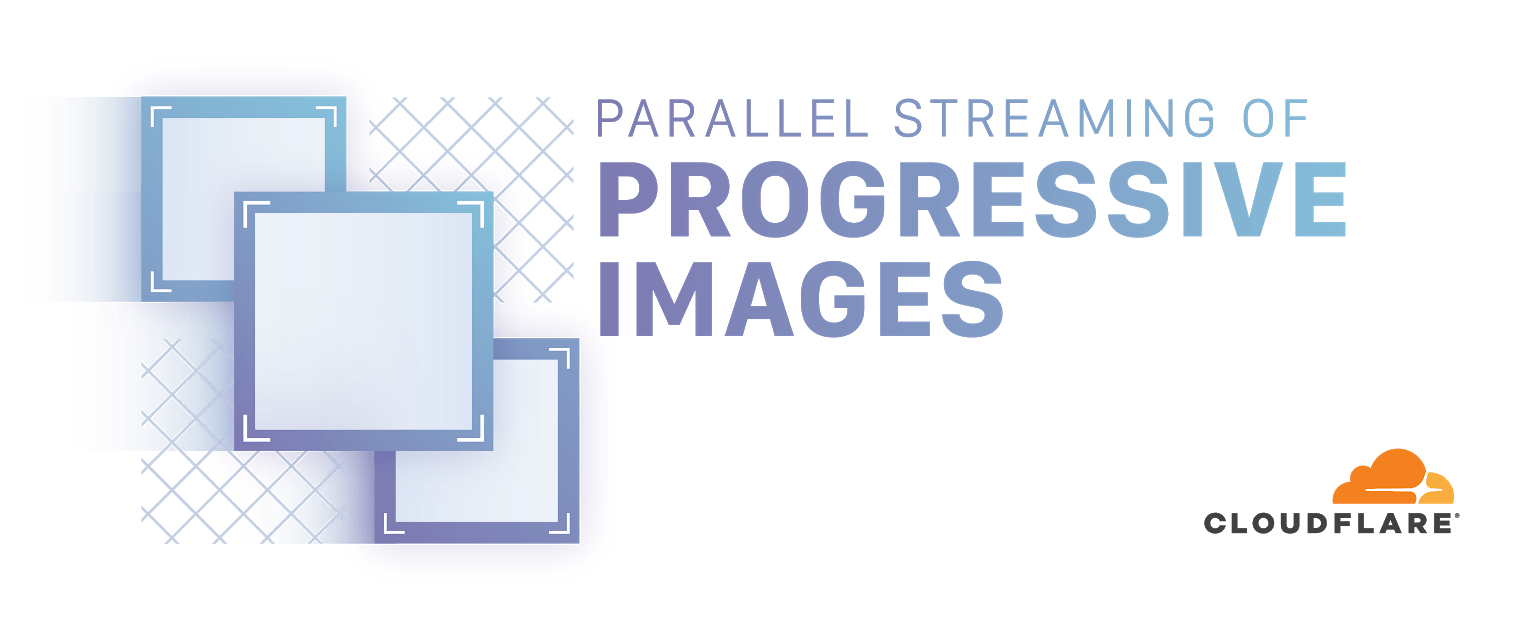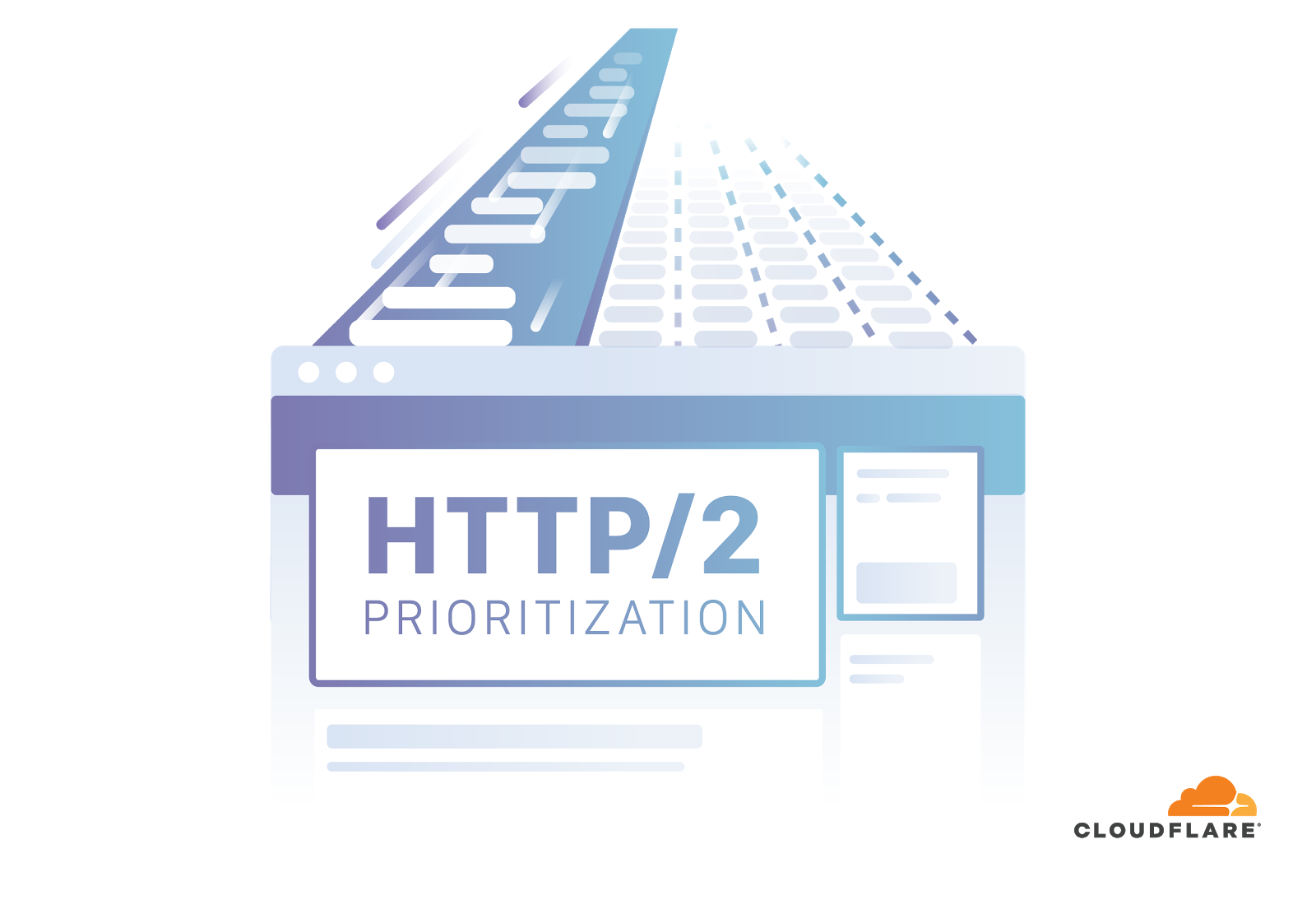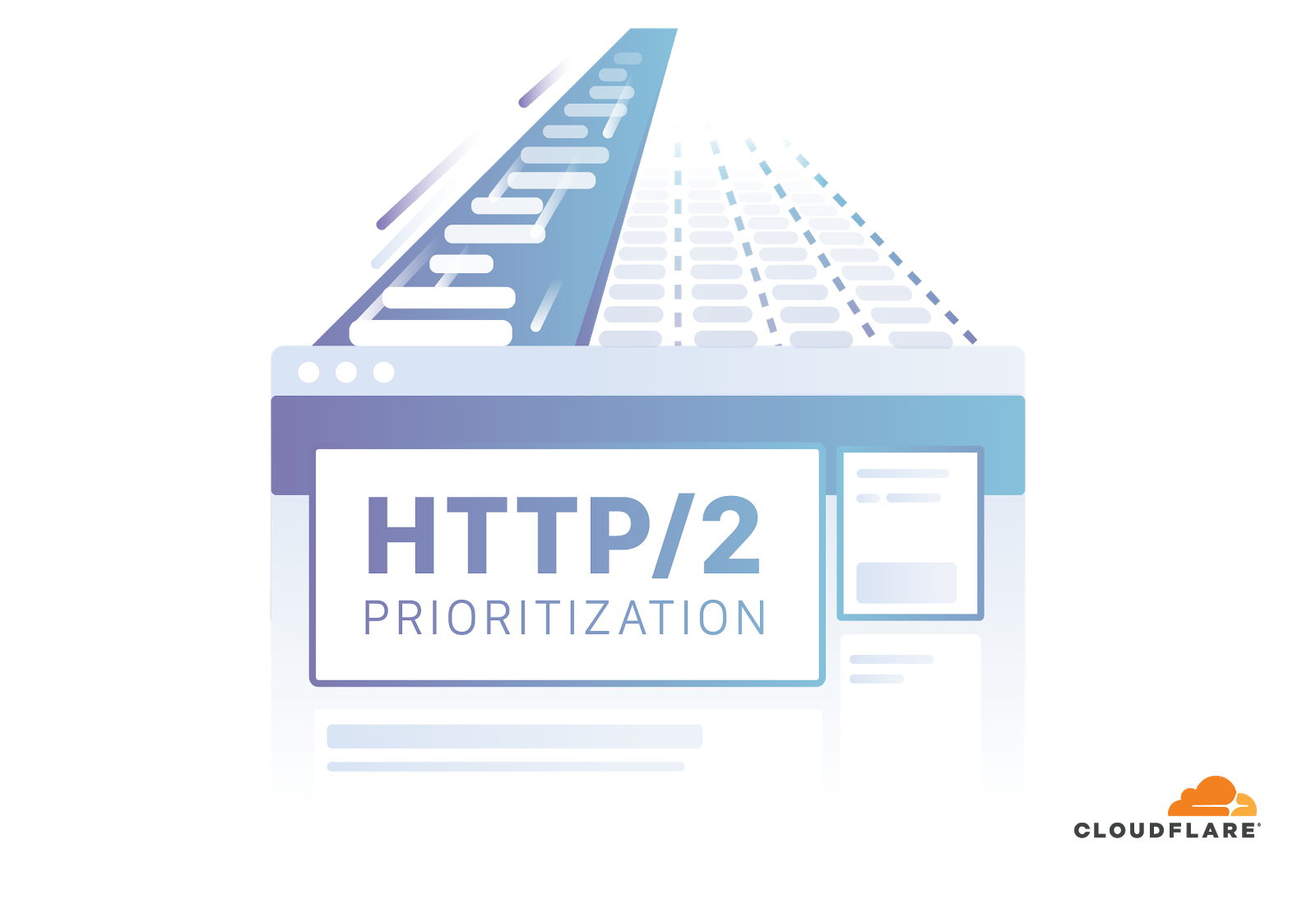Parallel streaming of progressive images


Progressive image rendering and HTTP/2 multiplexing technologies have existed for a while, but now we've combined them in a new way that makes them much more powerful. With Cloudflare progressive streaming images appear to load in half of the time, and browsers can start rendering pages sooner.
In HTTP/1.1 connections, servers didn't have any choice about the order in which resources were sent to the client; they had to send responses, as a whole, in the exact order they were requested by the web browser. HTTP/2 improved this by adding multiplexing and prioritization, which allows servers to decide exactly what data is sent and when. We’ve taken advantage of these new HTTP/2 capabilities to improve perceived speed of loading of progressive images by sending the most important fragments of image data sooner.
This feature is compatible with all major browsers, and doesn’t require any changes to page markup, so it’s very easy to adopt. Sign up for the Beta to enable it on your site!
What is progressive image rendering?
Basic images load strictly from top to bottom. If a browser has received only half of an image file, it can show only the top Continue reading
Data Breaches Are the New Normal. Encryption Should Be, Too
 O.C. Tanner says its customers are becoming more sophisticated about security. This is a big part...
O.C. Tanner says its customers are becoming more sophisticated about security. This is a big part...
Full Stack Journey 031: Using Bolt For Task Automation With Yasmin Rajabi
Let's meet Bolt, an open-source automation/orchestration tool originally developed by Puppet. Today's Full Stack Journey dives into how the tool works, the problems it solves, how it's similar to and different from existing tools, and more. Our guest and guide to Bolt is Yasmin Rajabi.
The post Full Stack Journey 031: Using Bolt For Task Automation With Yasmin Rajabi appeared first on Packet Pushers.
Full Stack Journey 031: Using Bolt For Task Automation With Yasmin Rajabi
Let's meet Bolt, an open-source automation/orchestration tool originally developed by Puppet. Today's Full Stack Journey dives into how the tool works, the problems it solves, how it's similar to and different from existing tools, and more. Our guest and guide to Bolt is Yasmin Rajabi.Better HTTP/2 Prioritization for a Faster Web


HTTP/2 promised a much faster web and Cloudflare rolled out HTTP/2 access for all our customers long, long ago. But one feature of HTTP/2, Prioritization, didn’t live up to the hype. Not because it was fundamentally broken but because of the way browsers implemented it.
Today Cloudflare is pushing out a change to HTTP/2 Prioritization that gives our servers control of prioritization decisions that truly make the web much faster.
Historically the browser has been in control of deciding how and when web content is loaded. Today we are introducing a radical change to that model for all paid plans that puts control into the hands of the site owner directly. Customers can enable “Enhanced HTTP/2 Prioritization” in the Speed tab of the Cloudflare dashboard: this overrides the browser defaults with an improved scheduling scheme that results in a significantly faster visitor experience (we have seen 50% faster on multiple occasions). With Cloudflare Workers, site owners can take this a step further and fully customize the experience to their specific needs.
Background
Web pages are made up of dozens (sometimes hundreds) of separate resources that are loaded and assembled by the browser into the final displayed content. This includes the Continue reading
50 Things – Data Gravity
The post 50 Things – Data Gravity appeared first on Network Collective.
Conversations – Toxic Workplaces
The post Conversations – Toxic Workplaces appeared first on Network Collective.
Communication Series – Informal Communication
The post Communication Series – Informal Communication appeared first on Network Collective.
Communication Series – Presentations
The post Communication Series – Presentations appeared first on Network Collective.
Communication Series – Illustrations
The post Communication Series – Illustrations appeared first on Network Collective.
The Choice Has Never Been Clearer
I am very excited about our next-generation R3 Series routing platforms, which are setting new standards for throughput, density, power efficiency and price performance. We designed these products to address the growing bandwidth demands in cloud datacenter and public networks, supported by significant Arista EOS enhancements including route scale, telemetry and security.
SD-WAN and NetFlow
The post SD-WAN and NetFlow appeared first on Noction.
Building Fabric Infrastructure for an OpenStack Private Cloud
An attendee in my Building Next-Generation Data Center online course was asked to deploy numerous relatively small OpenStack cloud instances and wanted select the optimum virtual networking technology. Not surprisingly, every $vendor had just the right answer, including Arista:
We’re considering moving from hypervisor-based overlays to ToR-based overlays using Arista’s CVX for approximately 2000 VLANs.
As I explained in Overlay Virtual Networking, Networking in Private and Public Clouds and Designing Private Cloud Infrastructure (plus several presentations) you have three options to implement virtual networking in private clouds:
Read more ...OpenStack Keeps One Eye on the Prize, One Over Its Shoulder
 The OpenStack Foundation needs to keep pushing innovation because the rest of the ecosystem is not...
The OpenStack Foundation needs to keep pushing innovation because the rest of the ecosystem is not...
VMware: AWS Is Our No. 1 Cloud Partner, ‘What We’ve Built Is Incredibly Unique’
 The vendors’ relationship was born in the cloud, and now they are moving in together into...
The vendors’ relationship was born in the cloud, and now they are moving in together into...
